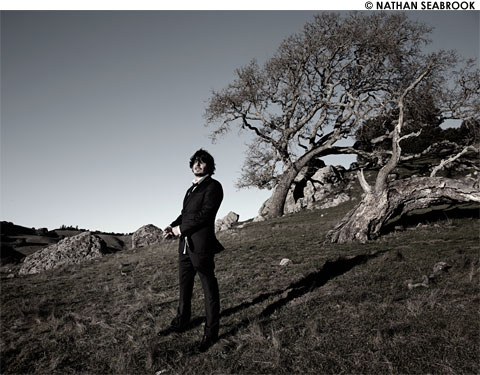
BENEATH THE SURFACE Amon Tobin's ISAM is a strangely soothing Rube Goldberg contraption: bass breaks that have watery explosions, modified wind chimes, and sleek blasts of 22nd-century synthesizer. |
If his 2011 off-the-cuff comment is any proof, Amon Tobin is terrible at resisting the urge to prod a proverbial beehive. A few months before Ninja Tune issued ISAM in May of last year, the Brazil-born, San Francisco-based musician uploaded a stream of his seventh record to Soundcloud along with annotations discussing the work. His first note attached to the first track contained a fantastically passive-aggressive jab at former and would-be fans: "Anyone looking for jazzy brks should look elsewhere at this point or earlier : ). It's 2011 folks, welcome to the future."
Since his start working in electronic music in the late '90s, first as Cujo and then under his real name, Tobin has made serious aesthetic changes, going from jazz-bred horn breaks, digestible bass lines, and catchy, club-friendly beats to mysterious, brain-bending compositions that resemble sonic installations as much as songs. "I know that when you make music over a period of time, people have certain expectations," he says by phone. "I'm really used to that because that's always been the case. Every time I make a new record, the camp is split. There's people who wish that it sounded like the old records and other people who don't think it's different enough. In the end, you just realize that there's no way you can please people. You really have to just do exactly what you want and just hope that people dig it."
In more specific terms, ISAM continues the confounding sound and instrument design elements Tobin last explored on 2007's Foley Room, which combined relatively conventional music with manipulated field recordings of animals and insects. ISAM — for Invented Sounds Applied to Music — is a strangely soothing Rube Goldberg contraption, made up of bass breaks that have watery explosions, modified wind chimes, sleek blasts of 22nd-century synthesizer, brooding strings, and vocals that were recorded in cavernous digital tombs. Oddly punctuated gaps of silence are everywhere, adding a disjointedness to ISAM that often prevents it from feeling like conventional "music."
Tobin is notoriously for keeping his instrumentation methods under wraps, since he enjoys reading how others interpret them, but he has revealed that this is his first sample-free album. "What I've always done essentially is transform sounds, and try and take things that I hear around me and develop them into a form I can work with, and feel like I have some affinity with," he says. "My starting point was taking pieces of recorded music and rearranging it into different forms. That led on to processing the sound as well as rearranging and editing it. Then, it got to a point where the final result was so far removed from its origins that the sample issue wasn't really relevant, and that was a long time ago already."